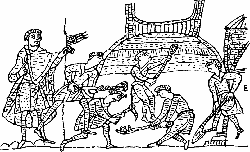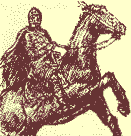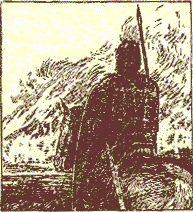Origins of the CastleTour of Pontefract Castle, part 6
“there was such hunger that men ate the flesh of their own kind, of horses and dogs and cats. Others sold themselves into perpetual slavery that they might be able to sustain their miserable lives. It was horrible to look into the ruined farmyards and houses and see the human corpses dissolved into corruption, for there were none to bury them for all were gone either in flight, or cut down by the sword and famine. None dwelt there and travellers passed in great fear of wild beasts and savage robbers.”  Few
villages in this part of Yorkshire escaped the Harrying of the North.
Most were still waste at the time of the Domesday survey 20 years later
however, thanks to its commanding position, Pontefract made a gradual
recovery. Few
villages in this part of Yorkshire escaped the Harrying of the North.
Most were still waste at the time of the Domesday survey 20 years later
however, thanks to its commanding position, Pontefract made a gradual
recovery.
LinkA website which gives a brief introduction to the history of the Castle.
Richard Bell, |
 Three
years after the battle of Hastings, William the Conqueror was ruthless
in putting down a revolt in York. Moving north along the Great North
Road he was held up by floods at Castleford. Here he saw the outcrop
of Magnesian Limestone at Pontefract as an ideal site for a castle.
Three
years after the battle of Hastings, William the Conqueror was ruthless
in putting down a revolt in York. Moving north along the Great North
Road he was held up by floods at Castleford. Here he saw the outcrop
of Magnesian Limestone at Pontefract as an ideal site for a castle.